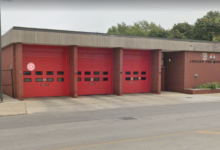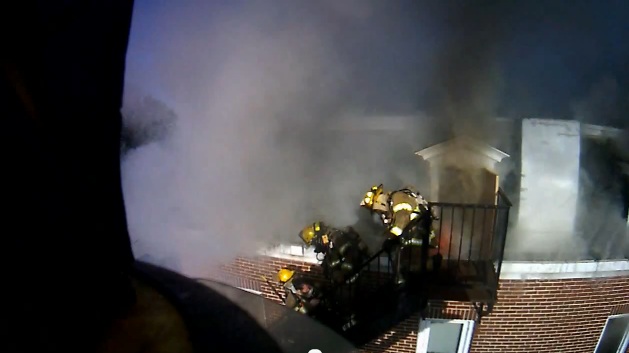Guest column: A fire chief & a consultant gaze into the crystal ball looking at the Internet's role at emergency scenes.
Bellingham, Washington Fire Chief Bill Boyd teams up with geospatial technology consultant and writer David Sonnen to look at the future of web-based information as an important tool for first responders. Here’s the article:
Open architecture for emergency response. A long overdue concept.
Summary: Emergency responders should be able to intuitively and quickly access useful open web-based information to help provide real time situational awareness, information and direction in mitigating wide-ranging emergency incidents. Emergency responders should be able to manage internal collaboration and public discourse from the same system using inclusive and non-proprietary technology solutions.

Imagine, a fire is reported in a dumpster behind an industrial facility in the outskirts of a small city in the middle of the night. A fire engine is dispatched from the local fire department. As they respond, the company officer pulls up a pre-incident plan of the facility on the engine’s mobile data computer (MDC). The plan notes the facility makes “airplane parts”, and stores a small amount of hazardous materials on site. No other information is available. The crew arrives to find a police officer casually directing them to the rear of the facility, where they pull up to find a typical sized dumpster with bright red/white flame and white smoke showing from the top. The engine company officer pauses for a moment, thinking the smoke looks a little unusual. He briefly considers contacting the dispatch center to contact the owner of the facility, as he has no way to know what might be in the dumpster. But, seeing that the fire seems to be contained, he orders a hose line stretched to extinguish the fire. Per SOP, both the firefighter and officer are wearing full protective gear, including breathing apparatus. The driver/pump operator charges the hose with water and the firefighter opens the nozzle. Suddenly, a violent explosion picks up both firefighters and throws them 20 feet, showering them with white hot metal fragments. The dumpster peels back like a cheap tin can. Next day, the local paper headlines, “Firefighters Surprised and Injured by Dumpster”.

Now, imagine the same scenario, only this time when the engine company arrives the officer, noting the unusual flame and smoke characteristics, turns to his MDC and types; “White hot flame and billowing white smoke, dumpster, airplane parts.” The computer screen immediately shows quick links to information that indicates this is not your typical dumpster fire – the contents burning are likely the byproduct of the manufacturing of aluminum airplane parts, and applying water to this type of fire would likely have catastrophic results. The company officer wisely decides to isolate the area, deny entry, call for a hazardous materials team and moves his fire engine away from the dumpster. Soon thereafter, the dumpster melts away, spilling the burning contents onto the concrete where they are quickly consumed. After an hour, all units clear the scene and return to quarters. On the way back, the Captain types a quick note on the unusual situation on his MDC – which automatically updates the department’s Facebook, Twitter, and Google Buzz accounts. The local paper doesn’t even notice. But a City Council member tweets back, “Nice job”.
You may be thinking; what’s the big deal? This information is all over the Internet and easy to find.” Yes, there is a wealth of information about hazardous materials, chemical composition, firefighting tactics, after-action reports/lessons learned, etc… But, finding and using this good stuff is another story. Emergency responders should be able to intuitively and quickly access useful web-based information to help provide real time situational awareness, information and direction in mitigating wide ranging emergency incidents. Responders should be able to hold up their end of their conversation with their community — simply and credibly == in ways that are relevant to their community.
Click here for the rest of the article
David Sonnen is a geospatial technology consultant and writer. His past work includes serving in emergency services and working for a Type 1 Incident Management Team. He has a degree in Forestry. His publications through International Data Corporation (IDC) have been surprisingly accurate in predicting future tech trends.
Bill Boyd is the Fire Chief for the Bellingham, Washington Fire Department. He serves as a incident commander for the Northwest Washington Incident Management Team- a regional Type III all-hazards team. He is a graduate of Western Washington University and the National Fire Academy Executive Fire Officer Program.






